- | 9:00 am
Would you spend $10,000 on a virtual dress? Gucci is betting on it
As the physical and virtual worlds become increasingly blurred, Gucci is designing with your avatar in mind.
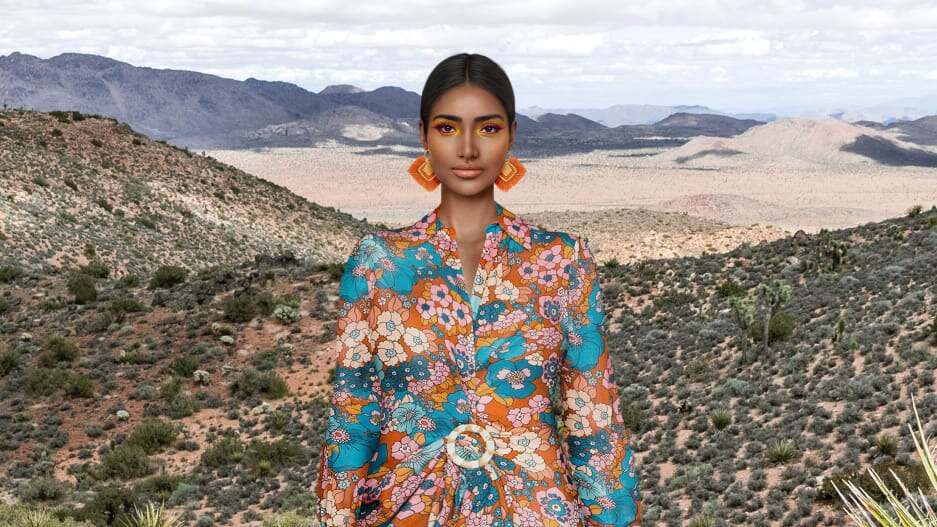
Gucci wants to dress you—and your avatar.
The Italian powerhouse is no longer just designing physical products, but also virtual clothes, shoes, and accessories that exist entirely in the digital realm. It’s part of the brand’s bet that in order for luxury fashion to thrive in the next decade, it needs to be seamlessly integrated into the digital worlds where consumers are increasingly spending their time.
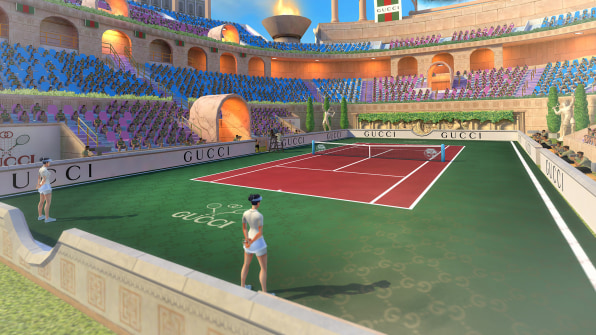
Over the last few years, Gucci has created digital versions of its latest collection for a fashion-themed video game, athletic wear for a popular tennis game, and virtual looks for online avatars. The brand launched a platform to let users design virtual sneakers and then put them on their feet using augmented reality.
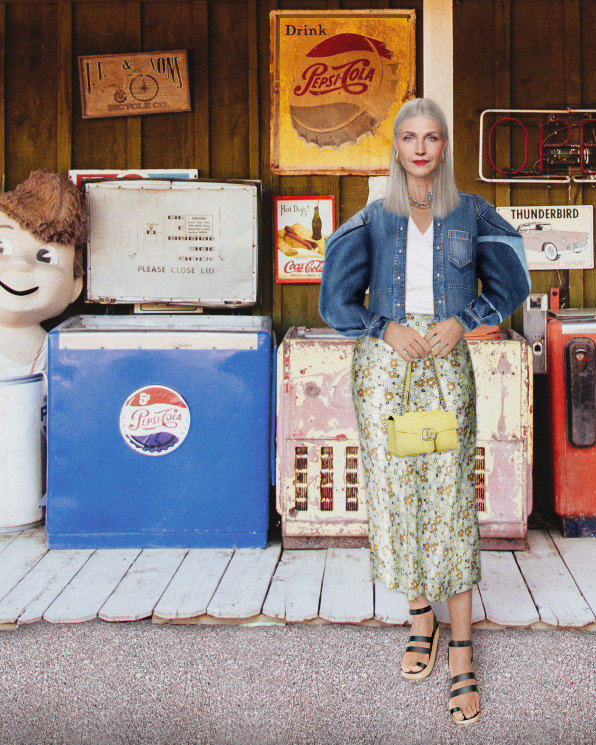
These items may inspire consumers to buy Gucci products IRL, but they could also have value simply as digital goods. “The virtual world is creating its own economy,” says CMO Robert Triefus. “Virtual items have value because of their own scarcity, and because they can be sold and shared.” (To wit: Someone recently dropped $2,400 on a pair of virtual sneakers on a mobile game called Aglet; another spent $9,500 on a digital dress that only exists on Instagram.)
Gucci is now designing with these video games and virtual realities in mind. Triefus says that for about five years, the brand’s designers created with the assumption that clothes will exist on the runway, but may also be worn by avatars and incorporated into games. “The worlds of fashion and gaming are colliding,” Triefus says. “We’re approaching gaming with a sense of experimentation, because this will put us in a good position to be ahead of the trends when they become ingrained.”
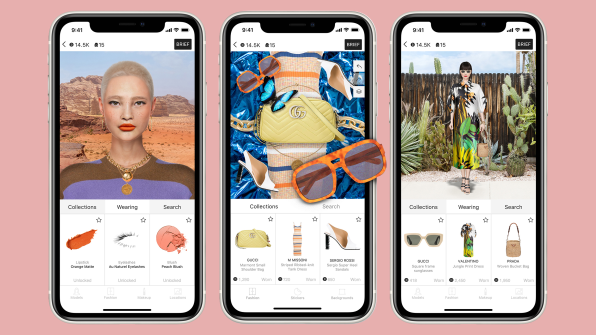
[Image: DREST]
The brand’s approach makes sense: almost 2.5 billion people around the world play video games, and that figure just keeps growing. The average gamer is 33 years old and upper middle class, which aligns nicely with Gucci’s target demographic. Players spend an average of seven hours a week on games and collectively drop an estimated $100 billion on virtual goods. (This has only gone up since the pandemic began.)
Gucci isn’t the only luxury brand trying to engage consumers on virtual platforms, but it may be the most prolific. Other brands have created simple, one-off games as marketing tools. Louis Vuitton launched an ’80s-style game inspired by creative director Virgil Abloh’s 2019 fall winter collection. Hermes created a horseshoe throwing mobile game, to bring the brand’s equestrian roots to life. Estée Lauder, meanwhile, just launched four video games to promote its most popular skincare products.
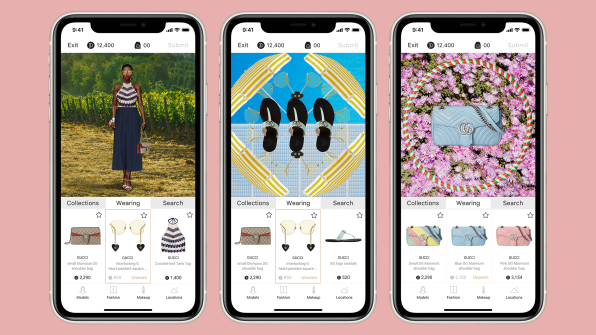
[Image: DREST]
Like its counterparts, Gucci began releasing a stream of games on its mobile app, which debuted an arcade section. But Triefus says the brand wants to go beyond this and break into other gaming platforms. It was among the first brands to partner with Drest, a game created by Lucy Yeomans, former editor-in-chief of Harper’s Bazaar U.K. and Net-a-Porter’s magazine. (Since then, more than 200 other luxury brands have come on board, including Prada, Off-White, and Christian Louboutin.) In the game, which launched in beta, players put together looks and makeup for hyper-realistic supermodels. Other players rate these looks, and high scores allow players to move up in the fashion world—from intern to stylist to editor—and earn money to buy more virtual outfits.
“We’re already seeing stylists using the app to show clients full looks on models with their body types,” Yeomans says. “And since you can purchase any item on the site, it’s become a platform where you can try before you buy.” Yeomans says it was vital for Drest to render clothes as realistically as possible, since luxury brands wouldn’t work with the game if clothes were misrepresented. To that end, Drest‘s developers worked closely with Gucci’s designers. Triefus says this partnership allowed Gucci to tinker with possible new revenue streams for a possible future where gaming replaces e-commerce. “Right now, gaming offers the opportunity to create experiences for our community,” he says. “But at the same time, they provide an opportunity to give visibility to new products. You might enjoy dressing yourself in a certain outfit in a game, then buy it.”
But some of the most intriguing possibilities have to do with creating products that will never exist in the real world. Gucci’s soon-to-launch Sneaker Garage is the first time that the brand is creating digital products that have no physical counterpart. Creative director Alessandro Michele designed a pair of ’80s-inspired sneakers that are only available on the platform; customers will be able to try them on using AR technology with Gucci’s app. Users can also design their own Gucci-branded sneakers.
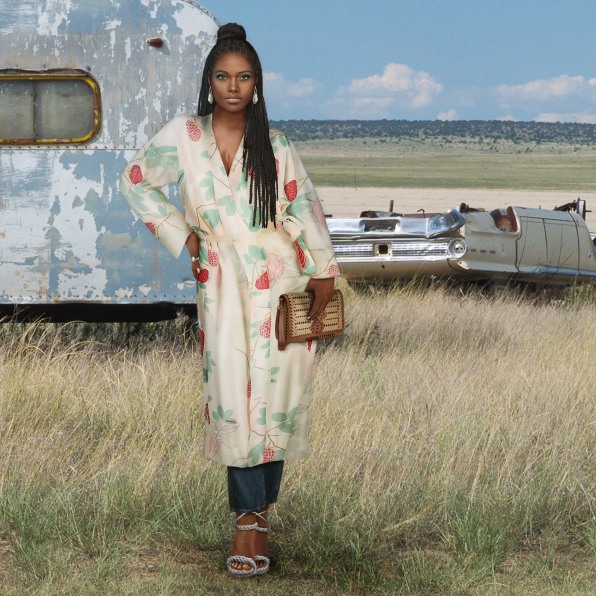
It makes sense that Gucci launched a virtual sneaker, as the sneakerhead community already intersects nicely with the gaming community. A new game called Aglet, created by a former Adidas director, centers around buying rare sneakers from brands like Nike, Chanel, and Balenciaga. Players can earn currency by doing tasks within the game, but they can also buy shoes with real money. One user has spent $15,000, including two pairs of Yeezy 2 Cheetahs at $2,400 a pop. “It makes sense that virtual objects would have real monetary value,” says Ryan Mullins, who created the game. “It’s no different from the way we buy clothes in the real world as a form of self-expression or status.”
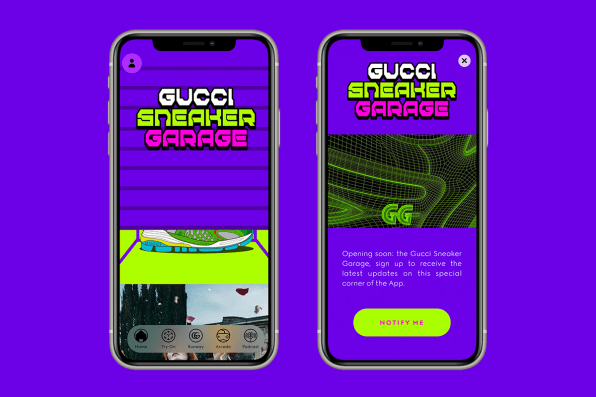
Gucci’s virtual sneakers are a step in this direction. Users will be able to create the sneakers for free, then share images on social media. But in time, Triefus says Gucci may incorporate outfits from its latest collections into games for players to wear, trade, or sell, much like the sneakers in Aglet. “Increasingly, there’s going to be a blurred line between the physical and the virtual,” he says.This brave new world of virtual clothing brings up fascinating new questions about what fashion is, and what it could be. High fashion was never just about physical garments, but about the storytelling, aspiration, and status that they conferred. Laura Balmond, a fashion expert at the sustainability nonprofit Ellen MacArthur Foundation, believes that these virtual clothes could replace the fashion-forward statement pieces that people tend to just wear once on Instagram, potentially reducing the amount of waste the industry creates.
To Triefus, the possibilities are endless, and he believes the future of luxury fashion will belong to brands that are willing to take risks now. And through these initial pilot projects, he says the company is already seeing results. “It’s creating an even stronger attachment, because people feel like they are closer to the brand. Customers feel like they are having a shared experience, and co-creating with Gucci.”






































